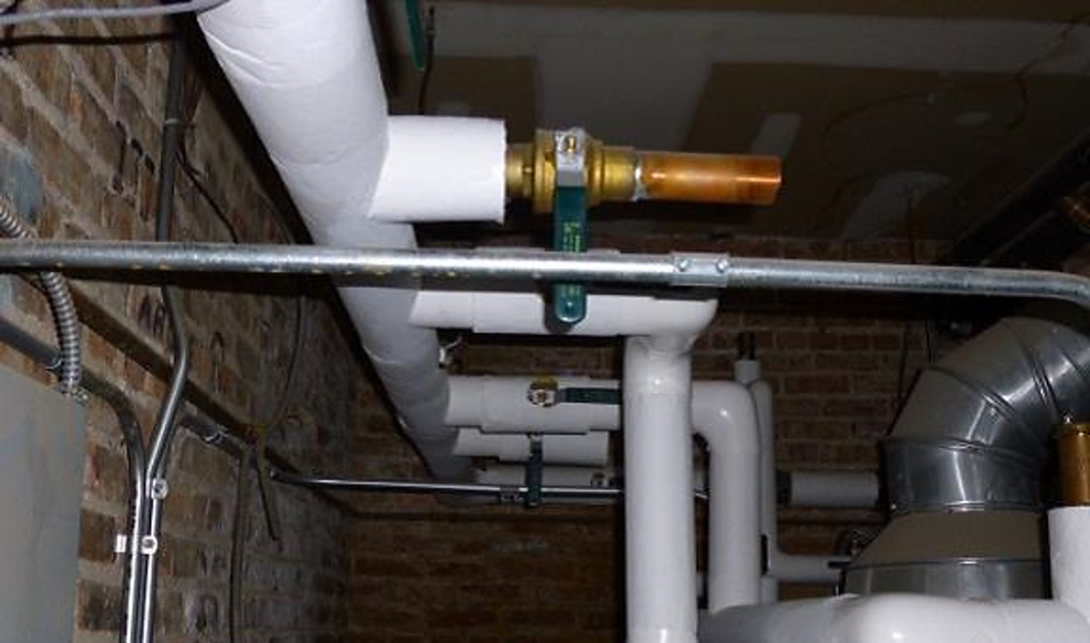
Plumbing
Pipes in Exterior Walls
Insulate all hot water supply pipes and, where condensation is a factor, insulate cold water supply pipes. If pipes must be placed in exterior walls, ensure that the pipes are insulated and that suitable cavity insulation is installed behind the pipes; air-seal the wall cavity to prevent cold air from flowing around the pipes.
Insulating water pipes can save energy by lessening heat loss through the piping. According to studies by DOE’s Building America program, distribution heat loss in uninsulated hot water pipes can range from 16% to 23% depending on the climate. Adding ¾-inch pipe insulation can reduce overall water heating energy use by 4% to 5% annually.
Pipe insulation is available in several forms: tubular pipe sleeves, spiral insulation wrap, and fiberglass batts that can be taped around the pipes; when properly installed, any of these can be effective. Clean and measure pipes before purchasing insulation and match the pipe’s outside diameter to the pipe sleeve’s inside diameter to ensure a snug fit. Wear gloves, goggles, and a dust mask when working with fiberglass. To further protect pipes, the wall cavity holding the pipes should be air-sealed with caulking or by foaming all seams between the back wall of the cavity and the framing and by sealing any holes through the framing for the piping. Then, cavity insulation should be installed behind the pipes, between the pipes and the exterior wall.